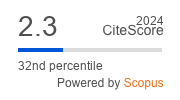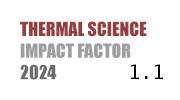THERMAL SCIENCE
International Scientific Journal
Authors of this Paper
External Links
EFFECT OF HEAT EXCHANGER FLOW PROCESSES ON THE PHASE CHANGE COOLING SYSTEM OF VEHICLE FUEL CELLS
ABSTRACT
In response to the issues of high heat dissipation density, large heat generation, and low heat dissipation efficiency of proton exchange membrane fuel cells, this paper develops a vehicle fuel cell heat dissipation performance test bench. The bench employs HFE-7100 phase change cooling fluid and utilizes three distinct configurations of heat exchangers under ambient conditions of 35°C. The heat dissipation characteristics of the system are then analyzed under varying working fluid-flow rates and fan speeds. The results demonstrate that, when subjected to the same fan speed and working fluid-flow rate, the system with three-process heat exchangers exhibits the most optimal heat dissipation performance. The heat dissipation of the system is observed to be 7% to 16.7% higher than that of the two-process configuration, and 5.1% to 7.2% higher than that of the four-process configuration. Moreover, the energy efficiency ratio of the system ranges from 18.58 to 26.62, indicating a notable reduction in energy consumption when compared to the two-process (3.9% to 10.3% improvement) and the four-process (7.4% to 12.7% improvement).
KEYWORDS
PAPER SUBMITTED: 2023-12-12
PAPER REVISED: 2024-05-15
PAPER ACCEPTED: 2024-05-15
PUBLISHED ONLINE: 2025-07-06
DOI REFERENCE: https://doi.org/10.2298/TSCI2503935B
CITATION EXPORT: view in browser or download as text file
2025 Society of Thermal Engineers of Serbia. Published by the Vinča Institute of Nuclear Sciences, National Institute of the Republic of Serbia, Belgrade, Serbia. This article is an open access article distributed under the terms and conditions of the Creative Commons Attribution-NonCommercial-NoDerivs 4.0 International licence

